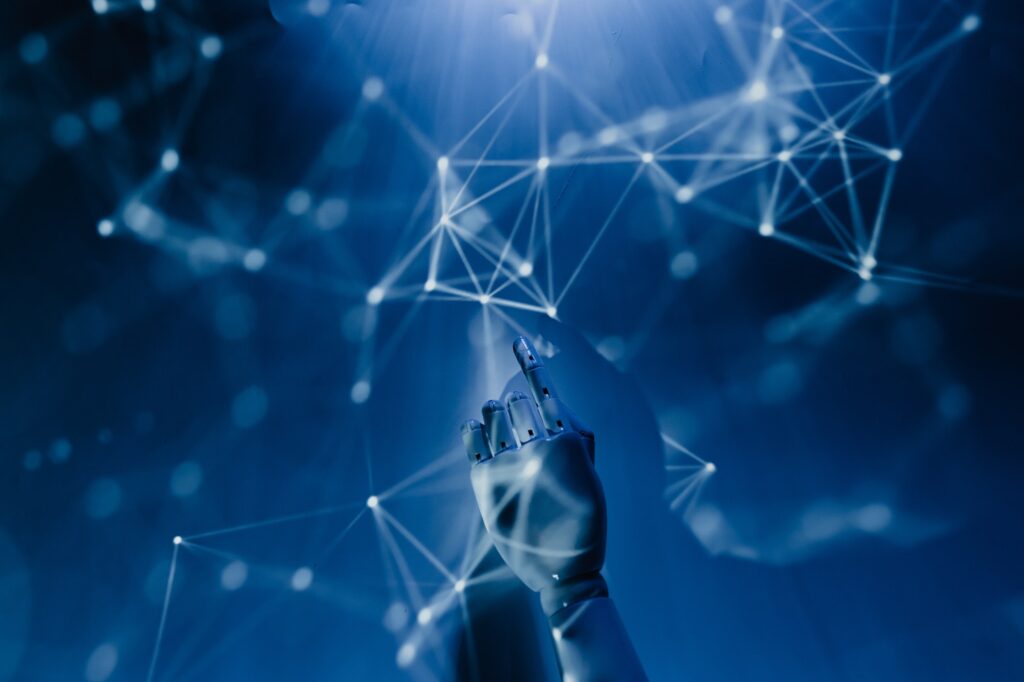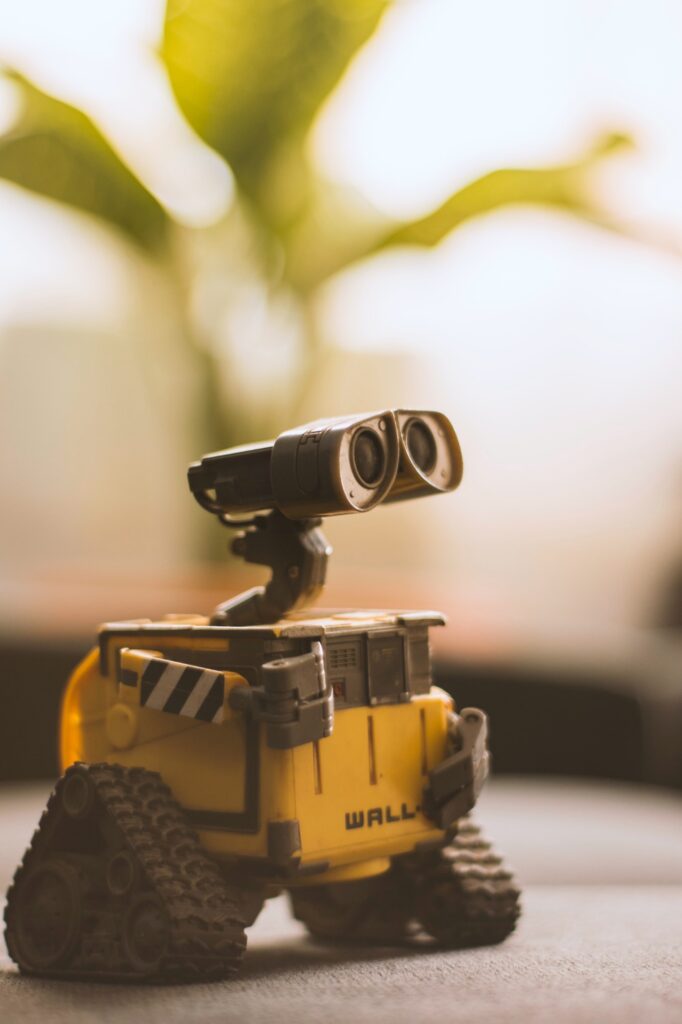6 AI Integrations to Massively Improve Business Security Systems
Businesses are always seeking ways to tighten their security. By 2025, small & medium-sized businesses will spend 10% more annually on AI integrations and security. As a result, the global commercial security system market will grow at a CAGR of 8.54% from 2021 to 2028; a leap from a value of USD 195.32 billion in 2020 to USD 376.34 billion by 2028.
New opportunities in the security industry have emerged because of the development of artificial intelligence. AI can analyze data faster than humans, detect patterns, and predict and help prevent security breaches.
AI can also automate tasks that usually require human intervention, reducing the possibility of human error and saving time. This article will explore AI integrations businesses can use to improve their security systems.

6 AI Integrations to Massively Improve Business Security Systems
AI Integrations to Improve Surveillance
The market for AI surveillance cameras will reach $1,400 million by 2030. This is growing at a CAGR of 20.82% from its estimated $4,500 million in 2021–2022. This demonstrates the increasing demand for AI-powered surveillance solutions.
AI-powered surveillance technology is becoming more commonplace in offices, too. As office owners seek more reliable and efficient ways to watch their premises, AI powered security cameras for businesses that recognize and assess dangers in real-time are becoming very popular. Here are a few more ways AI might enhance surveillance:
Facial Recognition
Facial recognition technology can recognize people on a watch list and follow their activities. It is very helpful in retail since it can detect repeat offenders and stop theft.
Using facial recognition can improve security systems in various ways, such as:
- Access Control: Facial recognition can control access to secure areas. Businesses can use this system to allow access to employees. The system checks if their faces match the stored data. You can only have access if there is a match.
- Identification: It can spot individuals on a watch list or people flagged for suspicious behavior. This may help in identifying possible dangers before they endanger security.
Object Recognition
AI-enabled cameras may identify items that aren’t supposed to be there. For example, it can spot luggage left unattended in public areas or tampered packages. It can also identify vehicles and license plates. This can be useful for monitoring parking lots and preventing unauthorized access.
Behavior Analysis
AI can analyze human behavior and identify patterns that could show a threat. It can detect, for instance, when someone is acting unusually or lingering in a certain region.
This can help businesses take proactive measures to prevent potential security incidents.
Video Analytics
Video analytics uses AI to analyze video footage from the likes of a GPU Direct Camera. Businesses can use video analytics in various ways to improve their security systems. These include:
- Intrusion Detection: Video analytics can detect when someone enters a restricted area. If someone enters a restricted area, the system can send an alert to security personnel.
- License Plate Recognition: You can use video analytics to recognize license plates. It helps identify unauthorized vehicles present on the premises.
AI Integrations for Cybersecurity
The global artificial intelligence in cybersecurity market will grow at a CAGR of 24.3% from 2022 to 2030. This highlights the increasing demand for AI-powered cybersecurity solutions. These systems can also automate incident response. As a result, it shortens the amount of time needed to detect and address a security event. Here are some AI integrations that can improve cybersecurity:
Threat Intelligence
AI can analyze large volumes of data from different sources to identify potential threats. AI uses machine learning (ML) to find trends in security breaches or other kinds of assaults.
Behavioral Analysis
AI can analyze user behavior to identify anomalies that may show a security breach. For example, AI can detect unusual behavior, login times, or access patterns.
Automated Response
AI can automate security response processes. This allows businesses to respond to threats in real time. For example, it can always block suspicious IP addresses or quarantine infected devices.
AI Integrations for Fraud Detection
Fraudulent activity can cost businesses millions of dollars each year. Spending on AI-enabled financial fraud detection will surpass $10 billion in 2027. This is far more than $6.5 billion in 2022. This highlights the potential cost savings that AI can offer businesses.
AI can help detect fraudulent activity and prevent financial losses. Here are some AI integrations that can improve fraud detection:
Transaction Monitoring
AI can watch transactions in real time and identify suspicious activity. It can recognize patterns that may show fraudulent activity. It can check unusual spending patterns or transactions that are outside the norm.
Identity Verification
AI-powered identity verification can help prevent identity theft and other types of fraud. It can examine biometric information and confirm identities. It can verify fingerprints, voice recognition, and face recognition.
Risk Scoring
AI can assess the risk associated with each transaction and assign a risk score. This can help businesses focus on which transactions to investigate further. It can also allow them to center on high-risk transactions.
AI Integrations for Biometric Authentication
This is the use of biological, physical, or behavioral characteristics to identify individuals. Voice recognition and fingerprint or iris scanning are two examples of biometric authentication.
It can improve security systems in various ways, such as:
Access Control
We can use biometric authentication to control access to secure areas. The system grants employees access to restricted areas only. It matches their biometric data stored in the system and then grants access.
Time and Attendance
Businesses can use biometric authentication to track employee time and attendance. This can reduce the risk of employees clocking in for each other. It can also improve accuracy in tracking employee hours.
It is more secure than conventional authentication techniques like PINs and passwords.
Biometric data is unique to each individual, making it difficult to fake or duplicate. Businesses can lessen the possibility of unwanted access to their systems.
Predictive Analytics
Businesses can use AI integration to detect and prevent security threats before they occur.
It uses machine learning techniques to analyze large volumes of data. It also identifies patterns and anomalies that may point to a security threat.
When you sync AI with other security systems, like intrusion detection and access control systems. It offers a more complete security solution. This can help businesses identify potential security threats. It also allows them to take proactive measures to prevent them.
Natural Language Processing (NLP)
This is an AI integration that can improve the effectiveness of security systems. NLP is a technology that allows computers to understand and interpret human language.
Security systems can use NLP to analyze text-based data. Emails, social media posts, and chat messages are such examples.
NLP can detect potential security threats. These threats include phishing emails and social engineering attacks. Businesses can use NLP to respond quickly to these threats. This helps prevent major security breaches.
Conclusion
AI integrations have immense potential to enhance business security systems. AI offers unprecedented speed and accuracy in analyzing data. It detects patterns and predicts future events.
Businesses can improve their security posture. They can do this by using cutting-edge technologies in their security systems. Businesses may use a range of technologies to enhance their security systems.
As discussed here, such technologies may include:
- Facial recognition
- Video analytics
- Cybersecurity
- Biometric authentication
- Fraud detection
- Predictive analytics
- Natural language processing
They may improve their security systems by integrating these solutions. Integrating these solutions can enhance the efficacy and efficiency of their security systems. This helps them defend against various threats and weaknesses.
AI-powered systems have several benefits. These include reducing false alarms, enhancing surveillance, and improving access control. It also helps in managing intrusions and reducing costs. Businesses should leverage AI to stay ahead of cyber threats. It’s crucial to protect sensitive data and assets from breaches and attacks.










